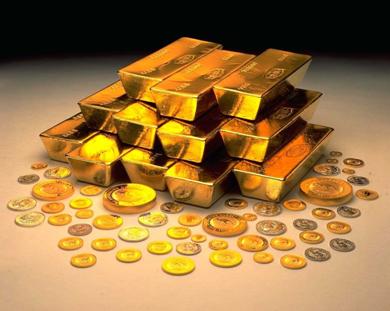Gold has done well in the recent past. Over the last six months it has given a return of around 14% (in dollar terms) and is currently quoting at $1250 per ounce (one troy ounce equals 31.1 grams). With these returns gold is coming back on the investment radar, though over the last five years the yellow metal has given a negative return of 12%.
Indians have always been fascinated with the idea of buying gold. As per the World Gold Council the consumer demand for gold in 2015 stood at 848.9 tonnes. Of this 654.3 tonnes was gold that went towards making jewellery and 194.6 tonnes was gold that went towards making bars and coins.
Interestingly, India now lags behind China when it comes to gold consumption. In 2015, Chinese consumer demand for gold stood at 984.5 tonnes, around 16% more than Indian demand. The Chinese consumed more gold than India both when it comes to jewellery as well as gold in the form of bars and coins.
The trouble in the Indian case is that the country produces very little gold of its own. In 2015, the domestic supply of gold in India, as per estimates made by the World Gold Council stood at 9.2 tonnes or a little over 1% of total consumer demand. This supply came from local mine production, recovery from imported copper concentrates and disinvestment.
What this means is that India imports a bulk of its gold demand. As Akhilesh Tilotia of Kotak Institutional Equities who is also the author of The Making of India writes in a recent research note titled Selling Equity for Gold: “On net basis, i.e. accounting for the gold which is imported for re-export, Indians bought US$267 billion of gold over the past decade.”
The gold that is imported into India needs to be paid for in dollars. India’s stock of dollars comes in from various things including foreign direct investment(FDI) made into companies and projects and foreign portfolio investment(FPI) made into stocks and bonds.
As Tilotia writes: “According to our calculations, FPIs own a quarter of the outstanding stock of the BSE-200 stocks as of 2QFY16. Over the past decade, India received net equity FII flows of US$119 bn; the net FDI inflow is US$185 billion.”
If we add the FPI and FDI numbers for the last decade it comes to $304 billion. As mentioned earlier India net-imported gold worth $267 billion over the last decade. This essentially means that a bulk of the dollars that came into India through the FDI and the FPI route where used to buy up gold.
As Tilotia writes: “Indians have, over the last decade, traded equity in their private and public companies for gold. Of the US$304 billion that came in as net FDI and FII inflows over the last decade (FY2007-16E), Indians bought gold worth US$267 billion.”
To put it simply, over the years, India has sold stocks to earn dollars and in turn used these dollars to buy gold. While this wasn’t planned, this is how things have turned out. In the process, the country has become a victim of the fallacy of composition.
As Greg IP writes Foolproof—Why Safety Can Be Dangerous and How Danger Makes Us Safe: “This fallacy occurs when what benefits an individual is wrongly assumed to benefit an entire group. For example, if one moviegoer stands, he can see the show better. But if everyone in the audience stands, no one sees better, and everyone is uncomfortable.”
Indians buying gold is a tad like that. When an individual Indian buys gold either as jewellery or as an investment or as a hedge against inflation, it makes sense for him at individual level. But when the same thing happens at a societal level, it creates problems for the country.
Buying gold needs dollars, which can’t be created out of thin air. Further, it can also lead to the value of the rupee against the dollar falling as had happened between May and August 2013, when the dollars coming into India dried up, but Indians still continued to buy gold. As Tilotia writes: “when foreign fund flows dried up, Indians continued to buy gold thereby precipitating worries of large slippages on the current account deficit.”
It also led to the demand for dollars going up leading to the rupee depreciating against the dollar. This led to the value one dollar nearly touching Rs 70. This became a huge problem given that oil imports suddenly became very expensive as Indian oil marketing companies had to pay more in rupees in order to buy dollars they required to buy oil. The demand of oil companies for dollars led to further depreciation of the rupee against the dollar.
Further, these were the days when diesel was subsidised by the government. The government in turn compensated the oil marketing companies for the under-recoveries they occurred. This pushed up the government expenditure as well as the fiscal deficit. The fiscal deficit is the difference between what a government earns and what it spends.
Of course, every time someone buys gold, it takes away money from another productive investment. Gold essentially is useful because it is useless.
All this was an impact of the fallacy of composition which came with Indians buying gold. The government is now trying to address this fascination that we have for gold through the gold monetisation scheme and the sovereign gold bonds. Let’s see how successful they are with it.
The column originally appeared on Vivek Kaul’s Diary on March 11, 2016
